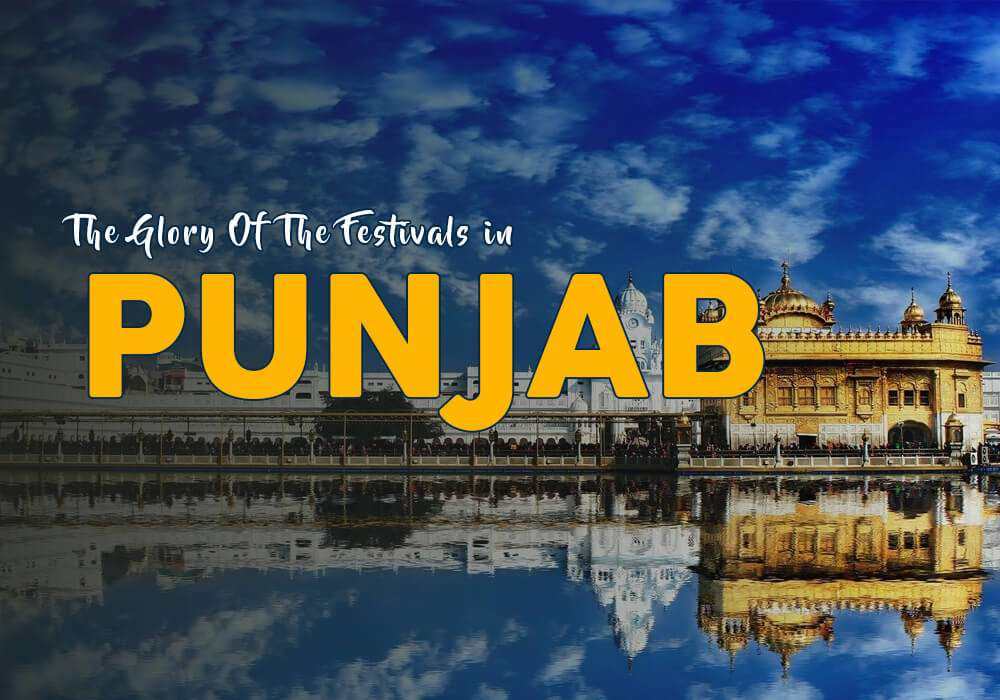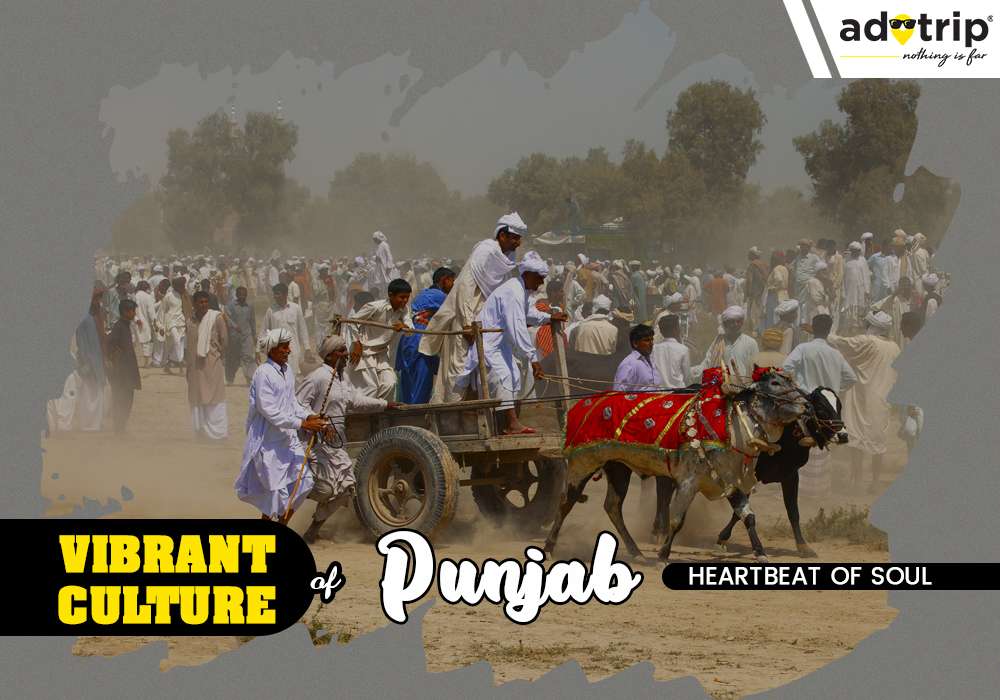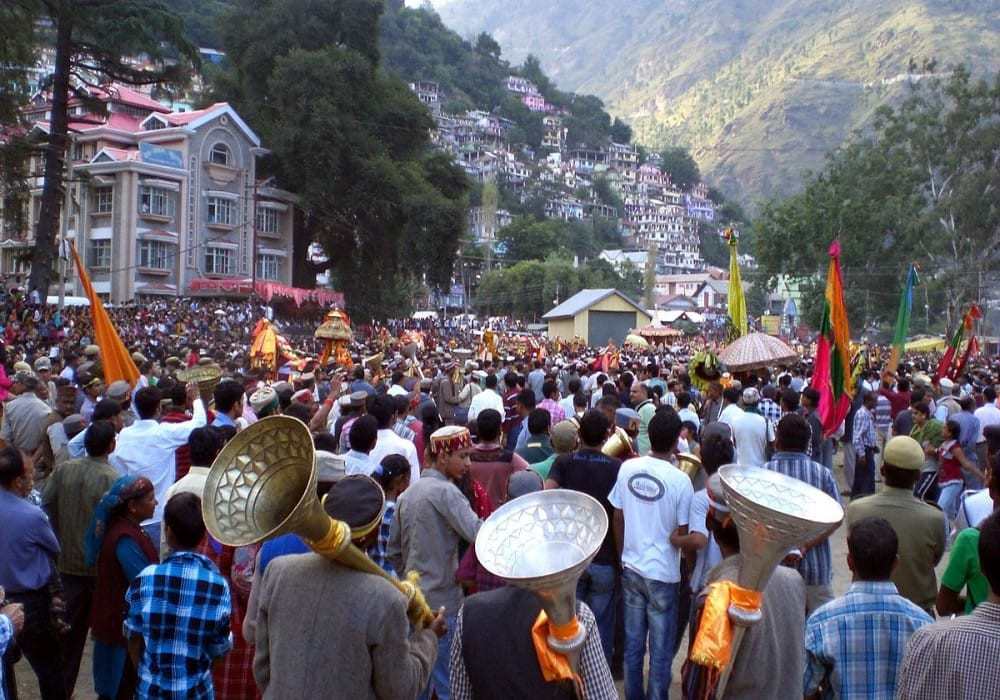
Last Updated At: 27-May-2024
Top 10 Temples In Punjab | You Must Visit In 2024
Nestled in the heart of India, Punjab stands as a testament to the rich tapestry of history and culture that defines the nation. This vibrant state, often called the "Land of Five Rivers," is renowned for its fervent religious spirit, agricultural prosperity, and treasure trove of ancient temples that beckon pilgrims and tourists alike. In this article, we embark on a spiritual journey to explore some of the most captivating temples in Punjab. From the iconic Golden Temple in Amritsar to the revered Gurudwara Fatehgarh Sahib in Fatehgarh Sahib, we'll unravel the tales of devotion and architectural marvels that define these sacred abodes.
List Of Top 10 Most Famous Temples In Punjab
- Golden Temple | Serene Splendour
- Durgiana Temple | Goddess's Glow
- Mata Mansa Devi Temple | Mountain Grace
- Devi Talab Mandir | Lake's Whispers
- Akal Takht | Sovereign Spirit
- Mata Lal Devi Mandir | Mystic Abode
- Shri Krishna Mandir | Love's Radiance
- Kali Mata Mandir | Fierce Majesty
- Julfa Mata Mandir | Ancient Aura
- Gurudwara Fatehgarh Sahib | Guru's Blessing
1. Golden Temple (Harmandir Sahib) | Serene Splendour
Our journey begins with the crown jewel of Punjab, the Golden Temple in Amritsar, one of the most prominent Sikh religious places in Punjab. Often referred to as the "Harmandir Sahib," this mesmerising temple stands as the epicentre of Sikhism. Situated in the holiest city for Sikhs, Amritsar, the temple is a breathtaking sight to behold. It is located in the middle of the serene Amrit Sarovar, a sacred lake. The Golden Temple's resplendent architecture, adorned with gold and marble, is a true testament to Sikh craftsmanship. Its intricate carvings and ethereal aura make it a spiritual symbol and a major tourist attraction, drawing visitors from all corners of the globe.
- Location: Amritsar
- Timings: 5 AM to 10 PM
2. Durgiana Temple | Goddess's Glow
Continuing our spiritual voyage through Amritsar, we arrive at the Durgiana Temple. This magnificent shrine, dedicated to the goddess Durga, echoes the architectural splendour of the Golden Temple. The temple, embellished with gold and marble, is a sight to behold. Devotees flock here seeking blessings, and the temple's sacred aura provides solace to their souls.
- Location: Amritsar
- Timings: 5 AM to 9 PM
3. Mata Mansa Devi Temple | Mountain Grace
Moving away from Amritsar, we journey to Panchkula, a city near Chandigarh, where the Mata Mansa Devi Temple awaits us. Among the top historical temples of Punjab, this temple is perched on the foothills of the Shivalik Mountains and is a tribute to the goddess Mansa Devi, a form of Shakti. Pilgrims throng to this divine abode, especially during the vibrant Navratri festival, seeking the goddess's blessings for prosperity and well-being.
- Location: Panchkula
- Timings: 4 AM to 10 PM
Read More : Famous Festivals Of Panjab
4. Devi Talab Mandir | Lake's Whispers
As our journey continues, we arrive in Jalandhar, a city resonating with spirituality. Dedicated to the goddess Devi, this temple's sacred aura is heightened by its unique setting around a tranquil lake. With roots that delve deep into antiquity, the temple weaves a tapestry of faith and history. Pilgrims and seekers are drawn to its hallowed grounds, where whispers of prayers mingle with the gentle ripples of the lake. The Devi Talab Mandir is a timeless sanctuary that encapsulates the spiritual essence of Jalandhar, a haven for those in pursuit of divine connection.
- Location: Jalandhar
- Timings: 5 AM to 10 PM
5. Akal Takht | Sovereign Spirit
Though not among the traditional temples near Amritsar, Punjab, the Akal Takht holds immense spiritual significance. As the highest temporal seat, it exudes sanctity and history. Crafted from marble and wood in the 17th century, the Takht symbolises the unyielding spirit of Sikh powers. A silent witness to centuries, it embodies the devotion and valour of a community, rendering it the holiest sanctuary for Sikhs worldwide.
- Location: Amritsar
- Timings: 2:30 AM to 10 PM
6. Mata Lal Devi Mandir | Mystic Abode
Nestled within the vibrant state of Punjab, the Mata Lal Devi Mandir stands as a beacon of spiritual allure and architectural elegance. This sacred haven, dedicated to the revered goddess Lal Devi, captivates devotees and curious travellers alike. The temple's intricate design, showcasing a harmonious blend of traditional Punjabi and contemporary styles, mirrors the region's rich cultural tapestry.
- Location: Amritsar
- Timings: 5 AM to 11 PM
Read More : Culture Of Panjab
7. Shri Krishna Mandir | Love's Radiance
Amritsar continues to enchant us with the Shri Krishna Mandir, a Hindu temple dedicated to Lord Krishna, amidst other famous Sikh temples in Punjab. What makes this temple unique is its tradition of offering free Langar (community meal) to devotees on special occasions, exemplifying the spirit of service and devotion.
- Location: Amritsar
- Timings: 6 AM to 9 PM
8. Kali Mata Mandir | Fierce Majesty
Nestled amidst the bustling city of Patiala in Punjab, the Kali Mata Mandir emerges as a remarkable ode to devotion and artistic fusion. This Hindu temple, dedicated to the fierce goddess Kali, is a testament to the harmonious coexistence of faiths. A creation of Sikh Maharaja Bhupinder Singh in 1936, the temple's origins are traced back to an era of cultural reverence. Its architectural allure transcends boundaries, mirroring the intricate beauty of the Khajuraho temples in Madhya Pradesh. As one ventures within, they are embraced by a sanctum that resonates with centuries of devotion, where the divine meets the intricacies of art. A revered pilgrimage site, the Kali Mata Mandir invites Hindus to partake in an enriching spiritual experience, connecting the present with a storied past.
- Location: Patiala
- Timings: 6 AM to 8 PM
9. Julfa Mata Mandir | Ancient Aura,
Our spiritual exploration in Amritsar leads us to the Julfa Mata Mandir. One of the most ancient temples in Punjab, dedicated to the goddess Julfa Mata, is regarded as one of the 51 Shakti Peethas, where it is believed a part of the goddess Sati fell. The temple's antiquity and divine aura make it a prominent pilgrimage site for Hindus.
- Location: Amritsar
- Timings: 5:30 AM to 9:30 PM
10. Gurudwara Fatehgarh Sahib | Guru's Blessing
Our journey concludes in Fatehgarh Sahib, where the Gurudwara Fatehgarh Sahib awaits us. This Sikh gurdwara, dedicated to Guru Gobind Singh, the tenth guru of Sikhism, has stood as a symbol of devotion and courage since the 17th century. It remains a revered pilgrimage site for Sikhs, a testament to their faith and resilience.
- Location: Fatehgarh
- Timings: Open 24 hours
Read More : Places To Visit In Panjab
Punjab, the Land of Five Rivers, is not just a geographical entity; it's a cultural and spiritual treasure trove. The temples we've explored in this article stand as testament to the deep-seated spirituality and devotion of the people of Punjab, showcasing some of the best temple architecture in Punjab. Each temple, with its unique history, architecture, and significance, adds a layer to the rich display of Punjab's spiritual landscape. Ready to embark on a journey to explore these wonders? Book your trip with Adotrip for the best deals on bookings, flights, and more.
With us, nothing is far!
Book Punjab Tour Packages
Frequently Asked Questions About Temples In Punjab
Q1. What are the most renowned temples to visit in Punjab?
A1. Some of the most renowned temples to visit in Punjab are the Golden Temple (Harmandir Sahib) in Amritsar, Durgiana Temple in Amritsar, and Bhagwan Valmiki Tirath Sthal in Amritsar.
Q2. Can I learn about the historical and architectural significance of the temples?
A2. Yes, many of the temples in Punjab have historical and architectural significance. The local guides or temple authorities often provide information about these aspects.
Q3. Are the temples open to visitors of all faiths?
A3. Yes, many temples in Punjab are open to visitors of all faiths. The Golden Temple, for instance, welcomes people from all backgrounds.
Q4. Are photography and videography allowed inside the temples?
A4. Photography and videography policies differ from temple to temple. In some cases, photography might be allowed in certain areas but restricted in others, especially within the inner sanctums.
Q5. What are the best times to visit the temples for festivals or ceremonies?
A5. The best times to visit temples for festivals or ceremonies are during major Sikh or Hindu festivals such as Guru Nanak Jayanti and Diwali. The Golden Temple is especially vibrant during these times.
Q6. Are there any nearby attractions or markets to explore along with the temples?
A6. Yes, many temples in Punjab are located near bustling markets and cultural attractions. For example, the Golden Temple area in Amritsar has a vibrant market and nearby historical sites.
Q7. Can I find accommodations or guesthouses near the temples for overnight stays?
A7. Yes, especially in places like Amritsar, you can find a range of accommodations near the major temples to make your stay convenient.
Q8. Are there any special events or rituals celebrated at the temples?
A8. Yes, many temples in Punjab host special events, kirtans (devotional singing), and processions on significant religious occasions. The Golden Temple continuously recites Guru Granth Sahib, known as Akhand Path.
Q9. How do I reach the remote temples in Punjab using public transport?
A9. Remote temples might have limited public transport connectivity. It's advisable to enquire locally about transportation options or consider hiring a private vehicle.
Q10. Are there any entry fees or donations required for temple visits?
A10. Some temples might request voluntary donations, while others charge nominal entry fees for maintenance and upkeep. It's recommended to be respectful of the customs and contribute as appropriate.
--- Published By Adotrip
Latest Blogs

Long Weekends In India 2025 - List of Holidays

Kazakhstan Travel Guide 2025: Affordable Luxury, Visa Free E...

Think Ayodhya is Just Temples? Discover Its Hidden Artistic...

Why Azerbaijan is the Best Budget Friendly Alternative to Sw...












 Dubai
Dubai Malaysia
Malaysia USA
USA





